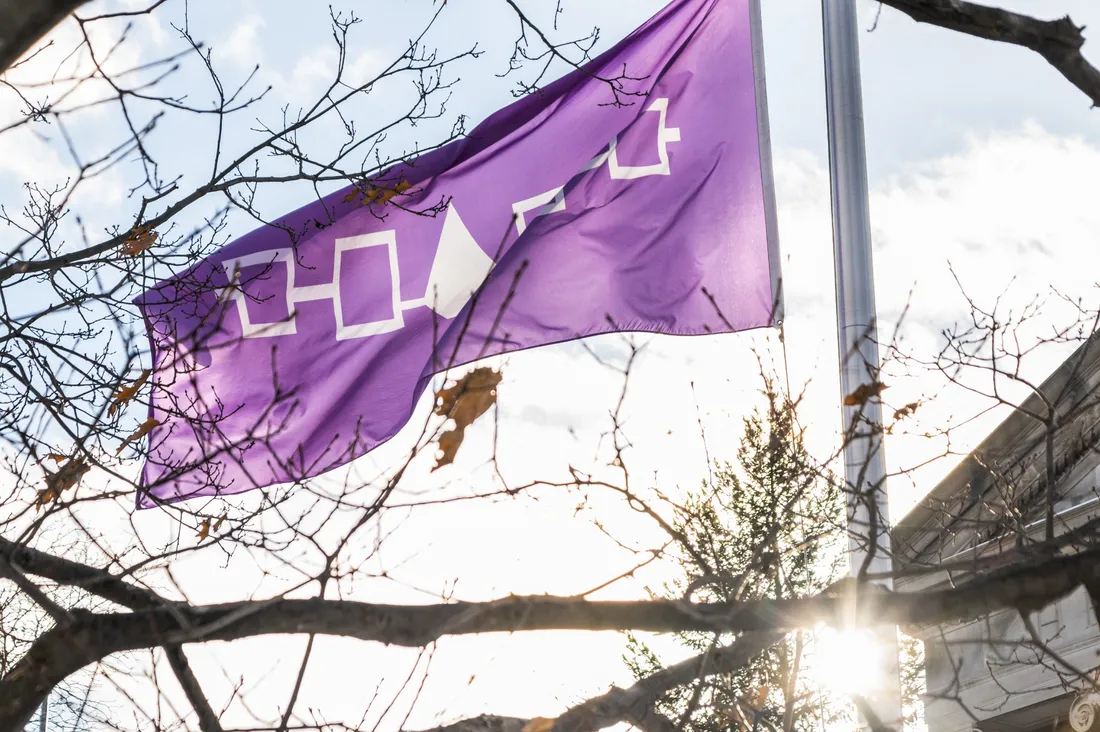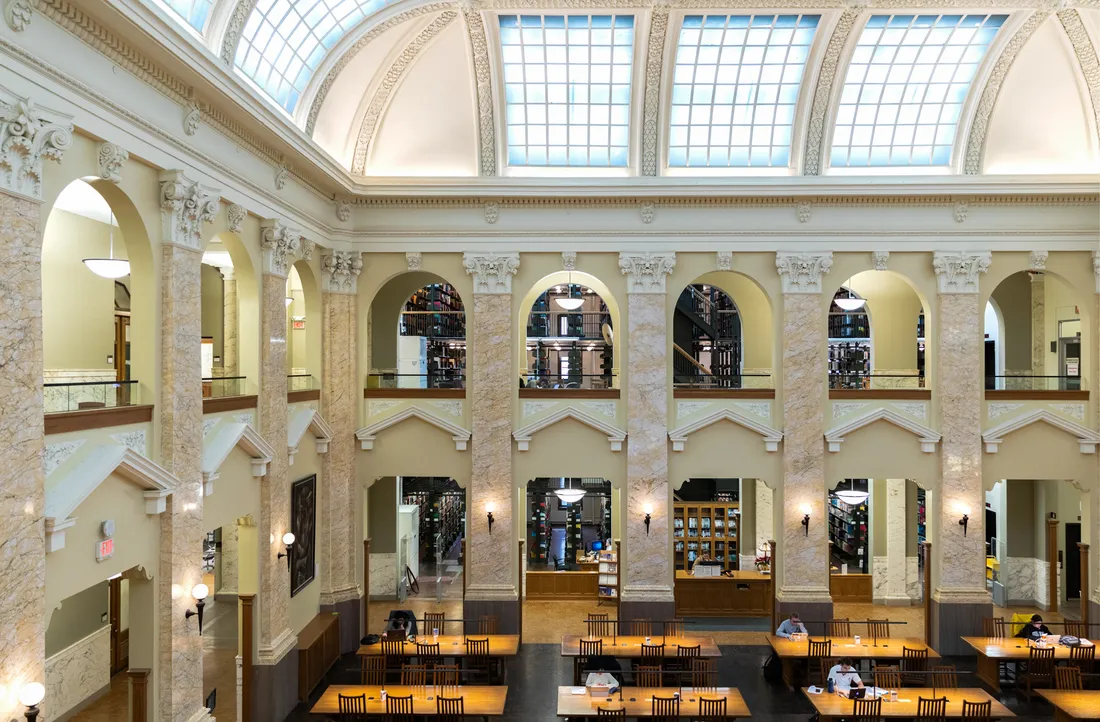Located near the heart of Haudenosaunee territory, Syracuse University is committed to empowering and supporting Indigenous students of any tribe or nation. From academic programs and resources to welcoming and supportive communities, Syracuse University provides a campus community with faculty, staff and alumni who are invested in helping Indigenous students succeed—like these students and alumni who call the University home.
A Good Mind for Community: Logan Booth
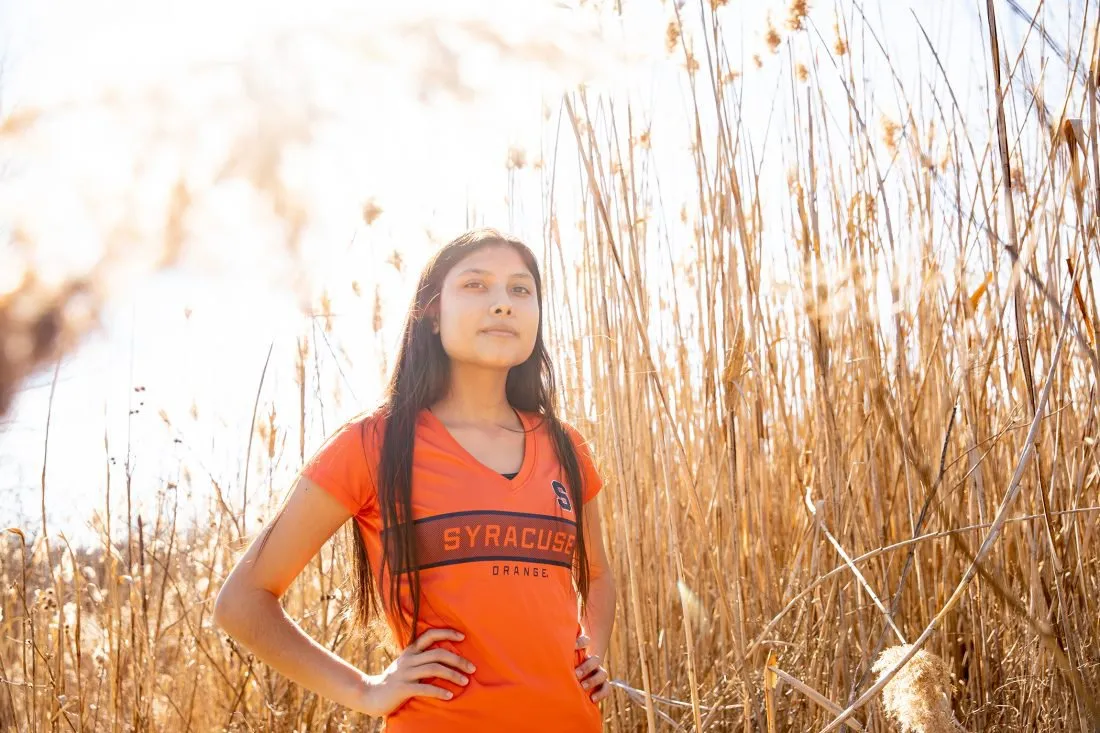
Logan Booth ’21, a Haudenosaunee Promise Scholarship recipient, took great pride in representing the young Native women of her community at Syracuse University.
During Logan Booth’s post-graduate internship, she produced audio interviews with Indigenous students for Sound Beat, a National Public Radio show featuring archived recordings from Syracuse University’s Belfer Audio Laboratory and Archive. It was a way for Booth ’21 to promote her heritage as a member of the Seneca Nation residing on the Onondaga Nation near Syracuse. For Booth, documenting current students’ experiences to provide knowledge for the future reflects the value of the Good Mind, a traditional teaching of the Haudenosaunee Confederacy.
“Practicing the Good Mind, we can help others in future generations of our community,” she says.
Booth, who earned bachelor’s degrees in English and textual studies from the College of Arts and Sciences and public relations from the S.I. Newhouse School of Public Communications, took great pride in representing young Native women of her community at Syracuse University. The first-generation college student and Haudenosaunee Promise Scholarship recipient says she found her communities among some 350 Native American students at the University.
At Syracuse, I was able to stay close to my culture and my identity and still be the very best student I could be.
Logan Booth ’21
During a three-day orientation program for new Indigenous students, Booth was introduced to specialized resources that helped her navigate her involvement with her traditional culture and community, while also being fully present as a student. “My professors seemed to understand that the traditional part of my identity was very important to me,” she says. “At Syracuse, I was able to stay close to my culture and my identity and still be the very best student I could be.”
Throughout her time at Syracuse, Booth says she also cherished her involvement with the Native Student Program through the Office of Multicultural Affairs, where staff members work with students, faculty, staff and families on initiatives that help Indigenous students transition to college and remain connected with their heritage, which is recognized as key to the success of their college experience.
Food Storyteller: Ethan Tyo
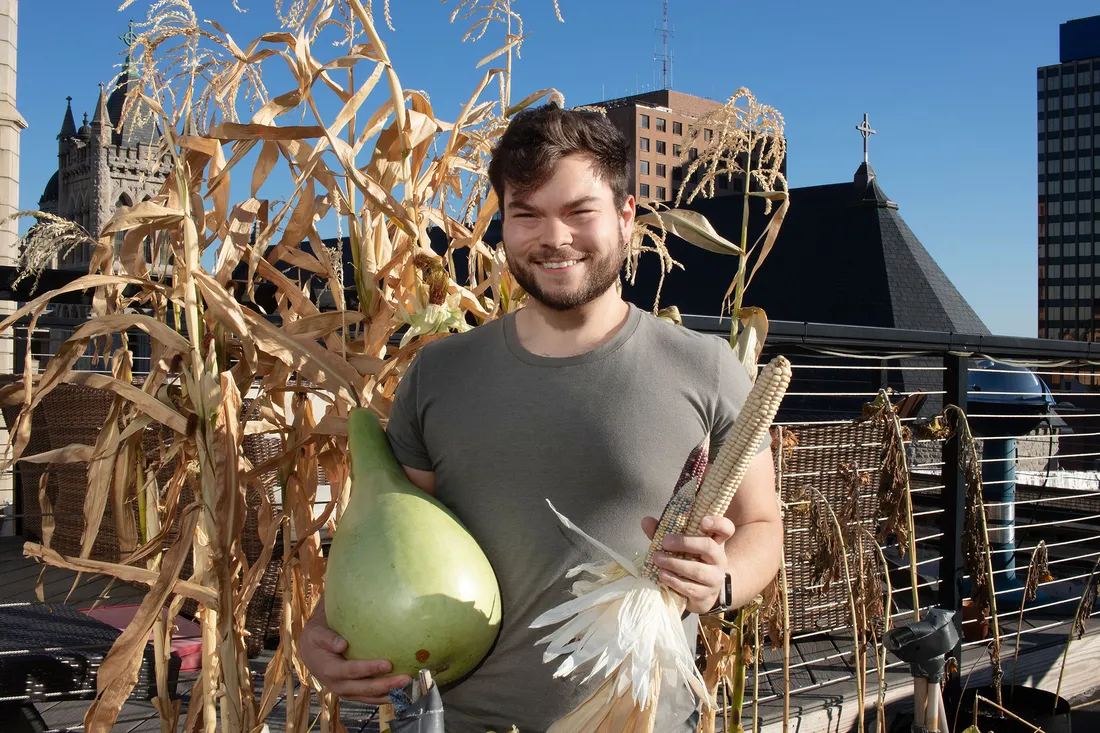
Ethan Tyo ’17, G’22 started a garden on campus to honor the traditions and culture of the Onondaga Nation and as a way to bring Native American students together. Photo by Geena Matuson G’19.
On campus last summer, Ethan Tyo ’17, G’22 started a garden featuring the Three Sisters—corn, beans and squash—to honor the traditions and culture of the Onondaga Nation, firekeepers of the Haudenosaunee, the Indigenous people on whose ancestral lands Syracuse University now stands.
For Tyo—a food studies master’s student in the Falk College of Sport and Human Dynamics who recently published the cookbook Fetagetaboutit—the garden, a cultural installation located in Pete’s Giving Garden on South Campus, represented a way to bring Native American students together and to thank the campus community for its support when he was an undergraduate majoring in information management and technology in the School of Information Studies.
The Three Sisters are the foundational foods of the Haudenosaunee people, and their growth from seeds embodies progress toward recognizing the contributions of Indigenous peoples, Tyo explains. Tyo, who’s Akwesasne Mohawk, wolf clan, used the traditional planting methods of the Onondaga Nation in creating the garden, which is part of his graduate practicum. The garden is being kept for seeds and extra will be given back to the Nation as a reciprocal gift and to acknowledge the important work they have contributed to the University community.
“Indigenous students need people to come together and understand projects like this,” Tyo says. “I’m happy to see how much the school has adopted the garden and given us these opportunities.”
A Leading Voice for Native Americans: Jourdan Bennett-Begaye
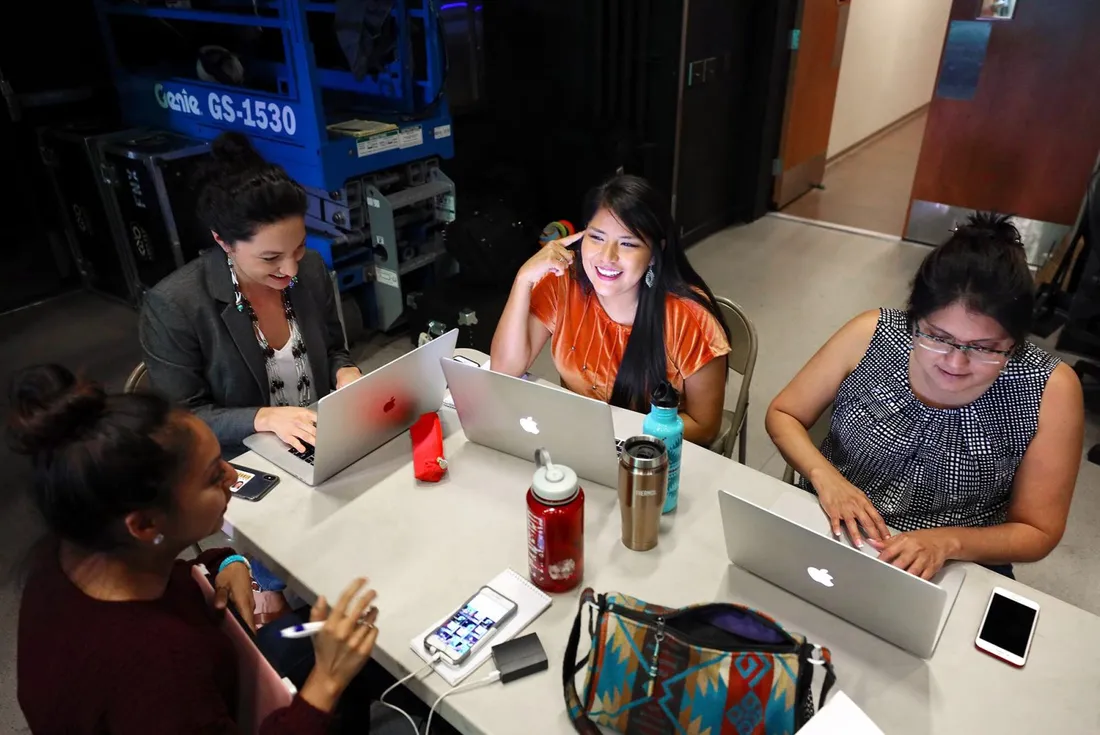
Reporters (left to right) Aliyah Chavez, Tsanavi Spoonhunter and Jourdan Bennett-Begaye G’16 join social media guru Jaynie Parrish as they go over Indian Country Today’s 2018 election plans the day before the first live Native Election Night. Photo by Eugene Tapahe/Tapahe Photography
As managing editor of Indian Country Today, Jourdan Bennett-Begaye G’16 has an influential role in addressing topics important to the Indigenous peoples of the Americas and creating a narrative that is their own. It’s also a way for the graduate from the Newhouse School to represent and honor her family and ancestors. “It’s amazing. I wake up and think, ‘How can I help my community?’ And being part of something bigger than yourself—it’s just beautiful, and it’s so powerful,” says Bennett-Begaye, a Diné (Navajo) citizen.
Bennett-Begaye, who grew up in Kirtland, New Mexico, originally envisioned becoming a physician’s assistant before her love of writing and storytelling pointed her more toward journalism than medicine. When it came time to apply to graduate school, Bennett-Begaye decided on the Newhouse School’s magazine, news and digital journalism program after meeting with Tammy Bluewolf-Kennedy ’04, G’10, an admissions counselor and Native American liaison at Syracuse University. She was awarded a prestigious Newhouse Graduate Newspaper Fellowship for Minorities, which, along with the presence of a strong Indigenous community, led her to Syracuse. “I enjoyed my time there. I loved it,” she says. “Although Syracuse is a huge university, it seemed small to me, and I felt like I had a family at Newhouse. That was the type of environment I needed.”
Bennett-Begaye says her role as managing editor for her magazine capstone project helped her develop skills that she uses today. As part of her fellowship, she interned with The Post-Standard /Syracuse.com, where her most meaningful assignment was reporting from Standing Rock on the Dakota Access Pipeline movement.
Although Syracuse is a huge university, it seemed small to me, and I felt like I had a family at Newhouse. That was the type of environment I needed.
Jourdan Bennett-Begaye G’16
She also found a home with the University’s Native Student Program, through which she connected with the Haudenosaunee community on campus. She and several other students co-founded the Haudenosaunee Student Alliance and were instrumental in advocating for the University to officially recognize Indigenous Peoples Day. “Jourdan became—and still is—a vibrant part of our Indigenous community,” Bluewolf-Kennedy says. “She is a powerful, spirited, resilient, trailblazing Indigenous woman!”

